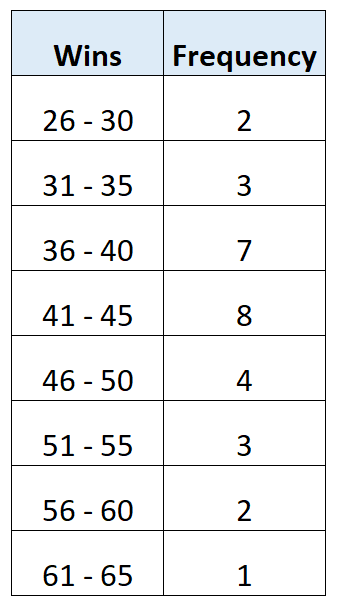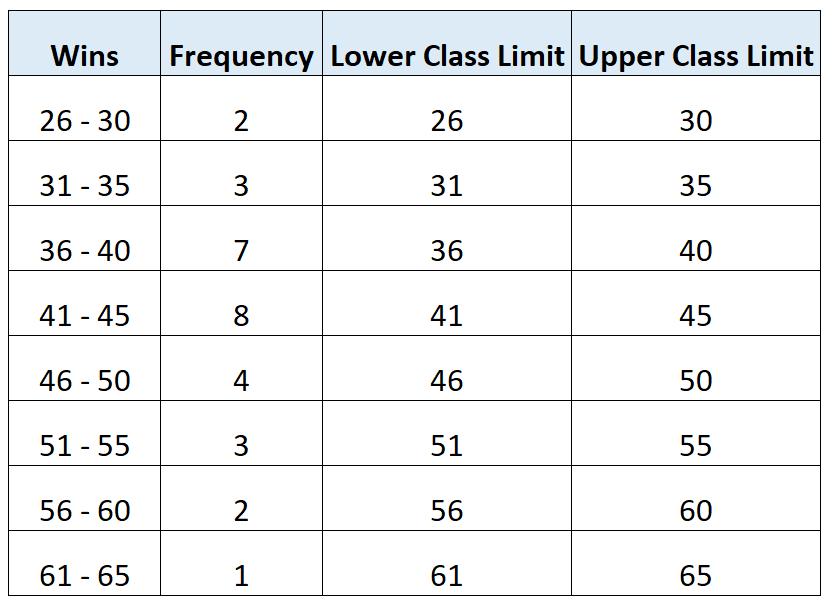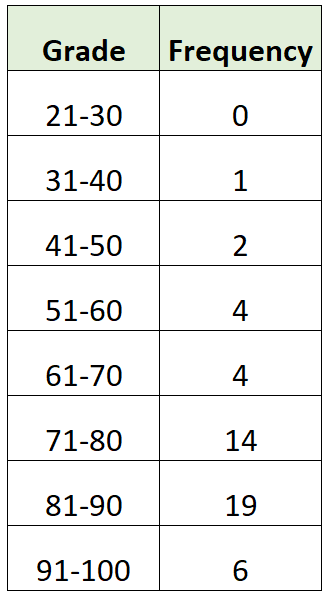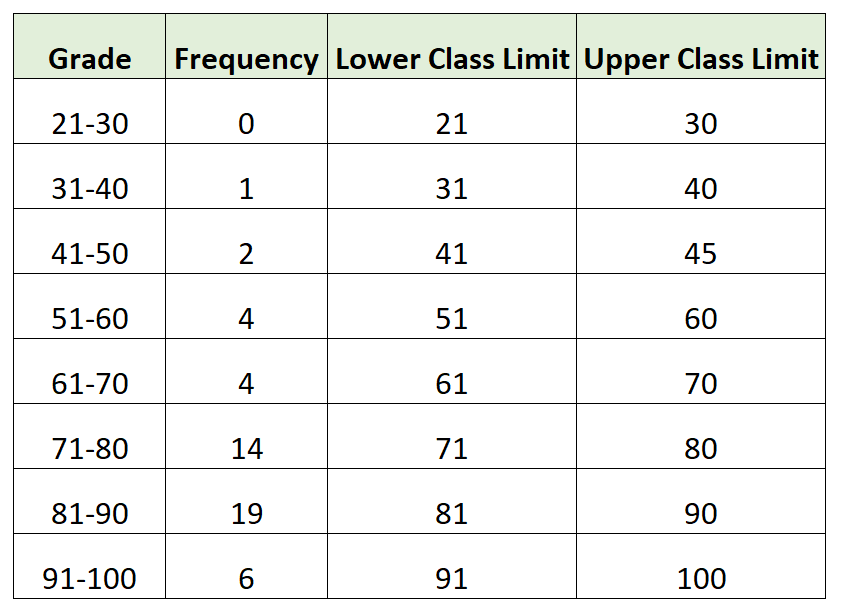In a frequency distribution, a class interval represents the difference between the upper class limit and the lower class limit.
In other words, a class interval represents the width of each class in a frequency distribution.
The following examples show how to calculate class intervals for different frequency distributions.
Example 1: Calculating Class Intervals
Suppose we have the following frequency distribution that represents the number of wins by different basketball teams:

The lower class limit and upper class limit are simply the smallest and largest possible values in each class:

The class interval is the difference between the upper class limit and the lower class limit.
For example, the size of the class interval for the first class is 30 – 26 = 4.
Similarly, the size of the class interval for the second class is 31 – 35 = 4.
If we calculate the size of the class interval for each class in the frequency distribution, we’ll find that each class interval has a size of 4.
Example 2: Calculating Class Intervals
Suppose we have the following frequency distribution that represents the exam grades received by students in a certain class:

The lower class limit and upper class limit are simply the smallest and largest possible values in each class:

The class interval is the difference between the upper class limit and the lower class limit.
For example, the size of the class interval for the first class is 30 – 21 = 9.
Similarly, the size of the class interval for the second class is 40 – 31 = 9.
If we calculate the size of the class interval for each class in the frequency distribution, we’ll find that each class interval has a size of 9.
Additional Resources
How to Find Class Boundaries
How to Find Class Limits
How to Find Class Midpoints